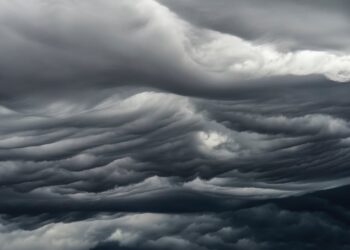Space is one of the greatest mysteries of the universe, but it’s also absolutely fascinating. Here are 50 awesome facts about space that you may not have known.
1. The Earth Is Not Round
Contrary to popular belief, the Earth is not perfectly round. It actually has an oblate spheroid shape.
2. Our Solar System Isn’t Centered
Our solar system is constantly moving around the Milky Way, rather than staying in one place.
3. The Milky Way Is Home To 200 Billion Stars
The Milky Way is one of the largest known galaxies and is estimated to host around two hundred billion stars.
4. The Sun Is Not The Brightest Star
The Sun may be the brightest star visible from Earth, but in fact it is only the fourth brightest star in the Milky Way.
5. Our Sun is Just Average
Our Sun may seem special compared to other stars in the sky, but it’s actually just an average star.
6. Light Year
A light year is the distance light travels in one year, which is approximately 6 trillion miles.
7. The Distance From Earth to the Moon
The average distance between the Earth and the Moon is 238,855 miles.
8. Fastest Spacecraft
The fastest ever spacecraft is the Helios 2, which can reach speeds of over 157,000 miles per hour.
9. There Are 8 Planets in Our Solar System
There are 8 planets in the solar system – Mercury, Venus, Earth, Mars, Jupiter, Saturn, Uranus and Neptune.
10. Astronauts Cook in Space
Astronauts cook their meals in space using specialized ovens which allow them to prepare food with heat, steam, and condensation.
11. Life Without Gravity
Living in space without the presence of gravity can cause muscle and bone atrophy as well as an overall disorientation of the senses.
12. The First Astronaut Was Russian
The first astronaut to fly into space was Yuri Gagarin, a Soviet citizen who flew in 1961.
13.Space Debris
There is an estimated 500,000 pieces of space debris floating around in Earth’s orbit, which could potentially cause collisions and other problems.
14. Most of Space is Empty
Most of space is actually a vacuum, with an average density of less than one atom per cubic meter.
15. Life Outside of Earth
While there is no confirmed evidence of life forms outside of our planet, scientists believe life could exist on other planets in our solar system.
16. Mysterious Dark Matter
Dark matter is an unknown form of matter that makes up approximately 27% of the universe.
17. Spacesuits
Spacesuits are designed to keep astronauts alive in the harsh environment of outer space, providing them with oxygen, protection, and temperature regulation.
18. Sunspots
Sunspots are areas of intense magnetic activity on the Sun’s surface, sometimes causing solar flares and coronal mass ejections.
19. The Age of the Universe
It is estimated that the universe is 13.8 billion years old.
20. Different Types of Stars
The night sky contains thousands of different types of stars, ranging from low-mass red dwarfs to large blue supergiants.
21. Alpha Centauri
Alpha Centauri is the closest star to our solar system, located 4.37 light years away.
22. Planets Without Moons
Mercury and Venus are the only planets in our solar system without known moons.
23. Galaxies Galore
The observable universe is estimated to contain over two trillion galaxies.
24. Rings Around Planets
Several of the major planets in our solar system, including Jupiter, Saturn, Uranus and Neptune, have rings of dust and rock circling them.
25. The Kuiper Belt
The Kuiper belt is a region beyond the orbit of Neptune which is home to many icy dwarf planets, including Pluto.
26. Asteroids
The asteroid belt between Mars and Jupiter is home to hundreds of thousands of asteroids, some of them very large.
27. Tidal Forces
The gravitational pull of the Sun and the Moon causes tidal forces on Earth, resulting in the formation of high and low tides.
28. SpaceWeather
SpaceWeather is the term used to describe changes to the environment around Earth caused by radiation, solar flares, and other space phenomena.
29. Black Holes
Black holes are the most powerful gravity wells in the universe, and nothing, not even light can escape from them.
30. The Hubble Telescope
The Hubble telescope is a large space telescope that has been sending amazing pictures of the universe back to Earth since 1990.
31. The Big bang Theory
The Big Bang Theory is the most widely accepted theory of how the universe was created, with the universe expanding from an extremely dense and hot single point.
32. Different Dimensions
Space is thought to have at least 11 different dimensions, although only three of them are visible to us.
33. The Attraction of Gravity
The force of gravity is responsible for the attraction between two masses, such as the Earth and the Moon.
34. Empty space is Not Empty
Empty space is not actually empty – it is filled with a low energy form of radiation called cosmic microwave background radiation.
35. The Universe is Expanding
The universe is expanding at an ever-increasing rate and will continue to do so forever.
36. Climate Change on Other Planets
Climates on other planets, such as Mars, can and do change due to natural processes like the planet’s tilt, libration, and rotation.
37. The North and South Poles of the Sun
The North and South poles of the Sun have their own important magnetic field which influences Solar activity.
38. Galactic Clusters
Galactic clusters are groups of galaxies bound together by gravity and containing anywhere from a few hundred to a few thousand galaxies.
39. Hubble’s Law
Hubble’s Law states that galaxies outside of our local group are all moving away from us at speeds proportional to their distance, which is an indication of the expanding universe.
40. Planet-Forming Discs
Around many stars are planet-forming discs, made up of dust and gas from which new planets are formed.
41. Universe’s Most Powerful Bursts
Gamma Ray Bursts are some of the most powerful explosions in the universe, originating from the rapid collapse of massive stars.
42. Supermassive Black Holes
At the center of many galaxies are supermassive black holes which contain the mass equivalent to millions or billions of times that of the Sun.
43. Meteor Showers
Meteor showers occur when the Earth passes through the trail of debris left by a comet, causing many bright shooting stars to appear in the night sky.
44. Galactic Core
At the center of the Milky Way lies a supermassive black hole known as the Galactic Core.
45. Comets and Asteroids
Comets consist of trapped ice, dust, and gas, while asteroids are made up of rock and other solid materials.
46. The International Space Station
The International Space Station is the largest man-made structure in space, and has been continuously occupied by human astronauts since 2000.
47. Signals From Extraterrestrial Intelligence
Scientists have been searching for signals from extraterrestrial civilizations since the 1960s









